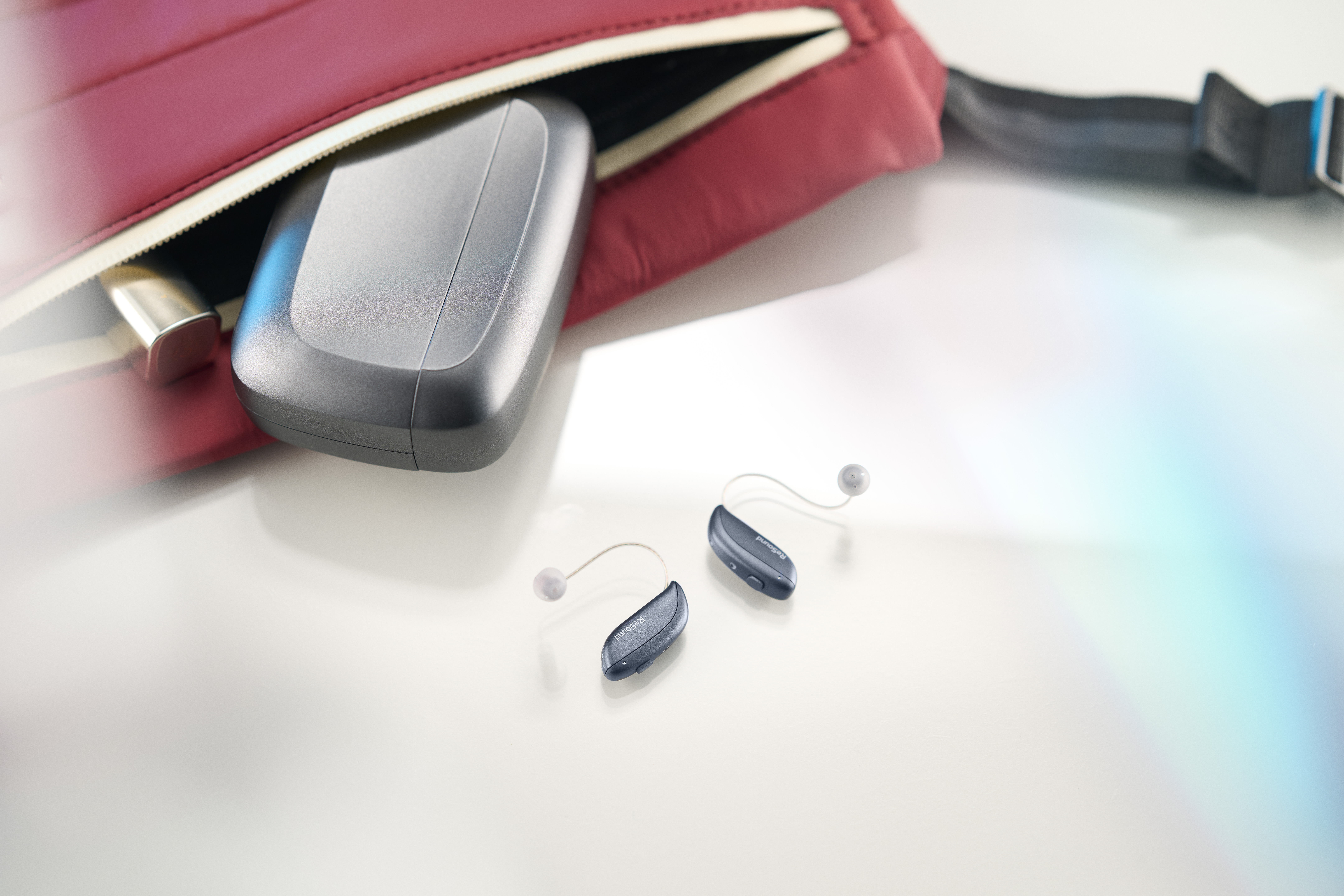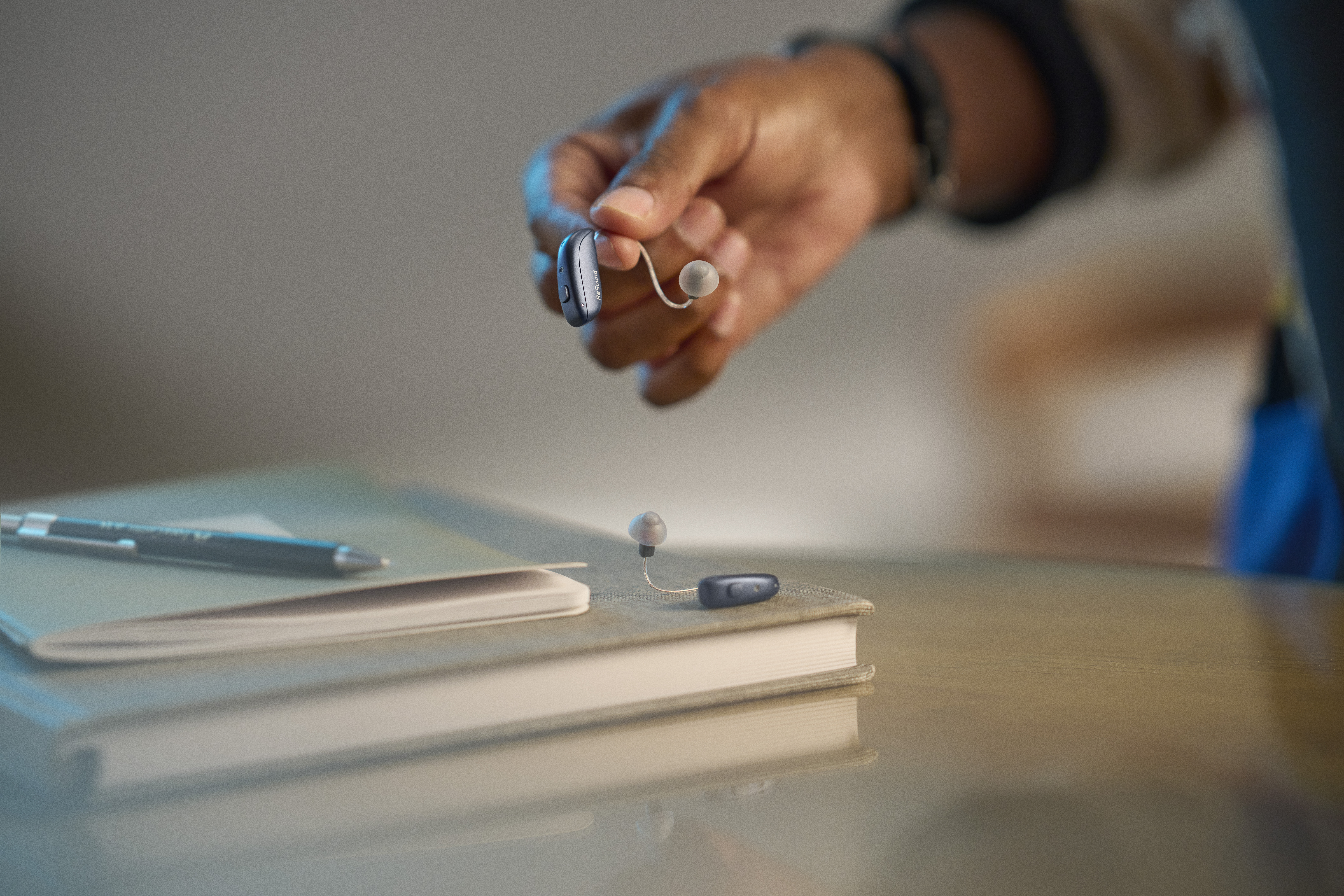Intelligence Augmented – GN’s human approach to AI
AudiologyOnline: GN recently announced ReSound Vivia, a new family of hearing aids that use the power of AI to help people hear speech better in noise. Can you talk a little more about this new technology?
Laurel Christensen, PhD: We are very excited about ReSound Vivia as it represents the next evolution of hearing technology within our industry utilizing a dedicated AI chip.
We believe it offers hearing aid users the best experience for hearing in noise allowing them to have all the benefits of AI, without compromising size, battery life or comfort. In fact, ReSound Vivia is the now the world’s smallest AI hearing aid with all-day battery life.
It also puts the user in control of what they want to hear, rather than the AI chip. We do this building upon our Organic Hearing philosophy where we focus on biomimicry to follow how the body naturally hears and how sounds are naturally processed by our brain.
We called this new technology evolution Intelligence Augmented (IA) as it is a more human approach to AI.
AudiologyOnline: Intelligence Augmented sounds intriguing. What does this mean?
Laurel Christensen, PhD: There is no doubt that AI is transforming all of our lives in many ways, including hearing aids.
This includes machine learning where AI systems learn from historical data, generative AI that creates original content, and deep learning with that uses Deep Neural Network (DNN) chips that mimic the human brain.
As we’ve been working with artificial intelligence, we’ve realized a lot of people see it as autonomous – like a self-driving car that acts by itself. But the way we are applying this technology, we see it as human intelligence augmented by AI. Our approach is more like an e-bike, where you are completely in control but are supported in your natural movement when help is needed.
With ReSound Vivia, we use the world’s most efficient dedicated DNN chip to put the person in control as ultimate decision maker in what they hear. This offers a more natural and intuitive listening experience, especially when challenged by noisy environments.
We do this through our new Intelligent Focus feature, which works intuitively to ensure the AI spotlights the voices people want to hear. The ones you are looking at. Responding to our natural behavior to turn our heads to look at what we want to hear.
AudiologyOnline: How does the DNN chip help power Intelligent Focus?
Laurel Christensen, PhD: Our AI technology tunes down distracting sounds while enhancing our hearing of speech just as our brains do naturally.
And not just any speech. We trained our DNN chip with speech embedded in background noise, including obvious sources of noise such as traffic, airplanes, cafeterias, or speech babble.
Then to maximize efficiency of speech identification in the DNN, we’ve not just included words, but samples of spoken sentences in various languages and with varied vocal effort to capture all the nuances of speech. In total, 13.5 million spoken sentences were used in this training.
Unlike traditional single-microphone noise reduction systems that rely on models of speech and assumptions about background noise, our DNN-based approach is data-driven. So rather than applying a priori rules for gain reduction, it mimics the interconnected structure of neurons in the human brain. This allows the system to make informed, adaptable decisions on how best to reduce noise while preserving speech, even for fast-changing, unfamiliar or ambiguous input because it has previous experience with similar data.
Intelligent Focus combines the learnings of the DNN chip with an upgraded 4-microphone binaural beamformer to give the world’s best focus on speech in front. This feature is the default setting for the Hearing in Noise program.
AudiologyOnline: How is this different than other AI hearing aids?
Laurel Christensen, PhD: It starts with how we determine the signal (or sound) of interest. We concentrated on how speech and speech communication works in real life.
For example, if you are at a dinner party with multiple speakers, often talking all at once, shouldn’t your hearing aid allow you the choice of deciding which signal to focus in on?
Currently, other devices use algorithms to decide this for you. This means you have no option but to listen to the loudest person at the table…whether you want to our not. This approach will inevitably make incorrect decisions from time to time, and this can frustrate hearing aid users.
For us, there are two things user and the device need to agree on. Is the sound a signal of interest or just noise? Our brains can compare the sound signals, identify unwanted noise, and effectively suppress it to improve speech clarity in noisy environments.
We want to reduce listening effort, while keeping the brain active in making choices about what we want to hear. Is it the person speaking in front of me or is it my child pulling at my shirt next to me? Is it the sound of drilling outside my window or is it the music I’ve just put on to play?
This is where the magic of binaural hearing comes in. Our brains, with help from our ears, can compare the signals, identify unwanted noise, and effectively suppress it to improve speech clarity in noisy environments. That’s how we designed ReSound Vivia.
AudiologyOnline: How can the DNN chip do all of this without compromising battery life?
Laurel Christensen, PhD: DNN-based algorithms require vastly more processing power than traditional model-based noise reduction, with a dedicated computer chip required solely to run the DNN.
ReSound Vivia has unrivalled all-day battery power, even when streaming. The battery life has 30 hours wear on one charge and 20 hours of use for a typical day using a combination of Intelligent Focus and streaming.
We can do this because of our advanced, extremely power efficient DNN chip, which is 17 times more efficient than another leading hearing solution with directionality and AI-based noise reduction.
This chip is ‘trained’ on millions of real-life sound samples, it works across 3.9 million tuned sound parameters and can do 4.9 trillion operations filtering out over 250,000 unwanted noises.
This chip efficiency also allows us to maintain the size of the microRIE, making it the world’s smallest AI hearing aid. This is because we smartly planned the design of our smallest rechargeable RIE to be able to incorporate the DNN chip.

AudiologyOnline: Will ReSound Vivia still feature Bluetooth Low Energy Audio and Auracast connectivity?
Laurel Christensen, PhD: Yes. The user can also enjoy seamless connectivity with all devices thanks to Auracast broadcast audio and Bluetooth Low Energy streaming, without compromising battery life.
A really new exciting feature as part of this launch is an Auracast Assistant that will be integrated into the ReSound Smart 3D app. Similar to how you connect to WiFi, the Auracast Assistant allows you to select and share Auracast streams with a single button tap, even with smartphones and devices that aren't yet Auracast compatible.
AudiologyOnline: When it comes to hearing in noise, how does ReSound Vivia stack up?
Laurel Christensen, PhD: We’ve put our hearing aids to the test in clinical trials with hearing aid users, asking them how it helps them hear and connect with others.
We found that 89 percent of users preferred our new Intelligent Focus when hearing in noise compared to our legacy feature, and more than 6 out of 10 people experienced better hearing in noise compared to another leading AI hearing solution with improved speech intelligibility.
AudiologyOnline: In what styles will ReSound Vivia be available?
Laurel Christensen, PhD: The ReSound Vivia hearing aids are available in a microRIE rechargeable and two non-rechargeable RIE models. They come in a wide variety of colors, including two new colors…red and navy blue.

AudiologyOnline: Can you also tell us more about ReSound Savi, which was announced at the same time as ReSound Vivia?
Laurel Christensen, PhD: Recognizing the need to have a variety of price options, we are simultaneously launching ReSound Savi, an essentials range hearing aid that features Bluetooth LE Audio and Auracast broadcast audio. This ensures that even more people with hearing difficulties can experience the latest in connectivity innovation. It will also be in a new miniRIE rechargeable and two non-rechargeable RIE models in five colors.
AudiologyOnline: When will these hearing aids be available?
Laurel Christensen, PhD: ReSound Vivia and ReSound Savi will be rolled out in the US on February 20, followed by Canada in early March along with other countries worldwide.
For more information, please visit https://pro.resound.com/en-us/.


